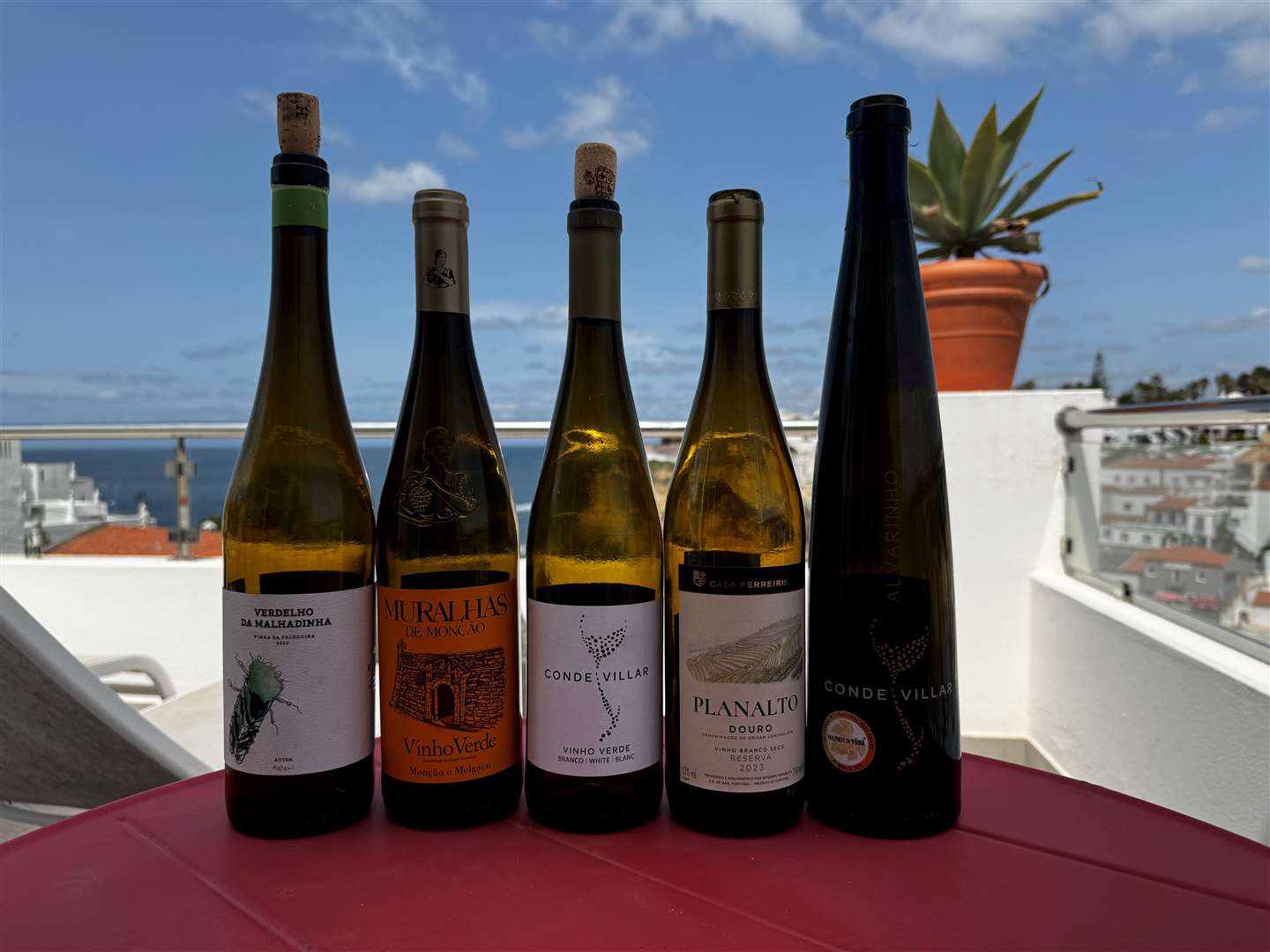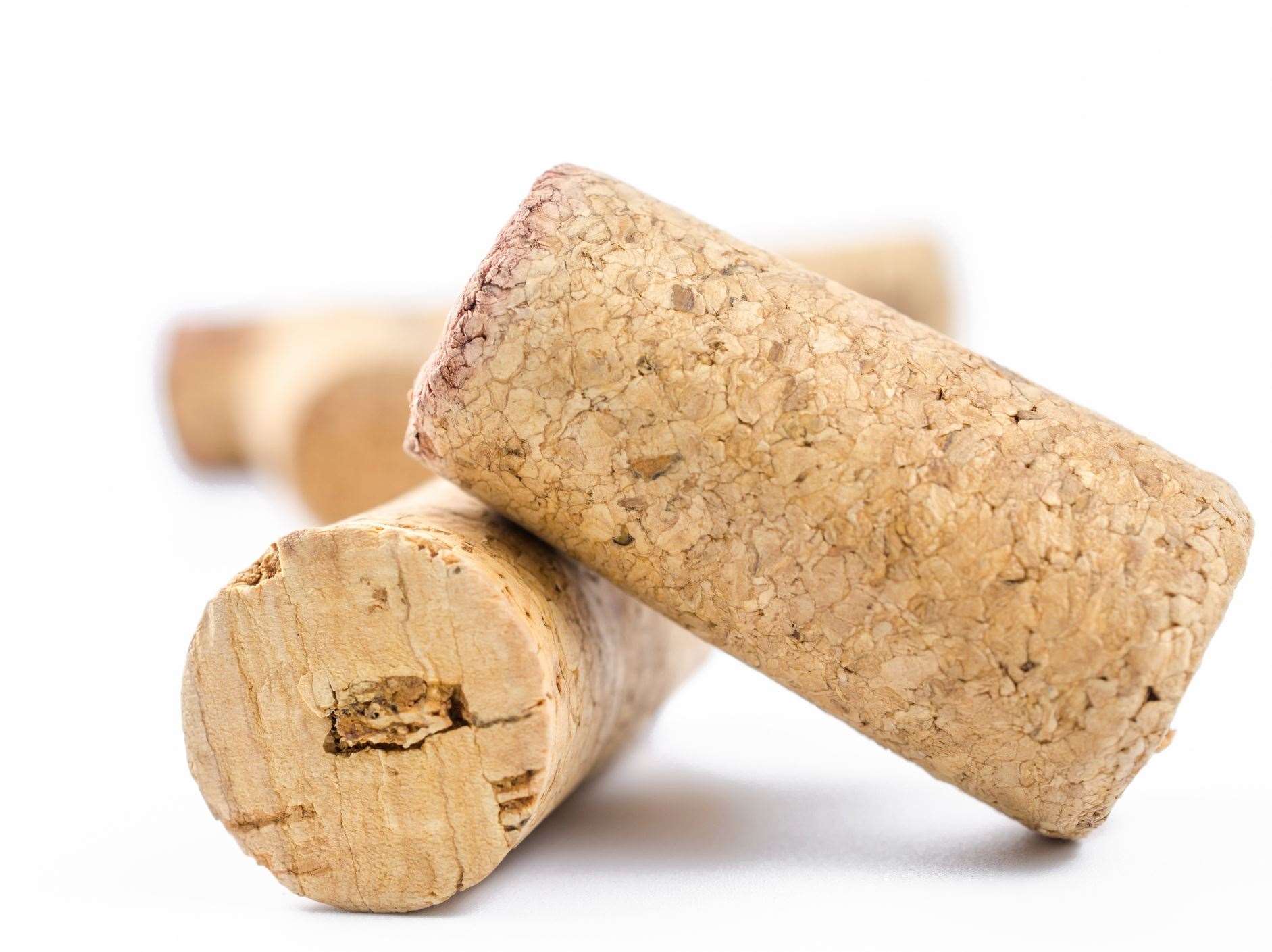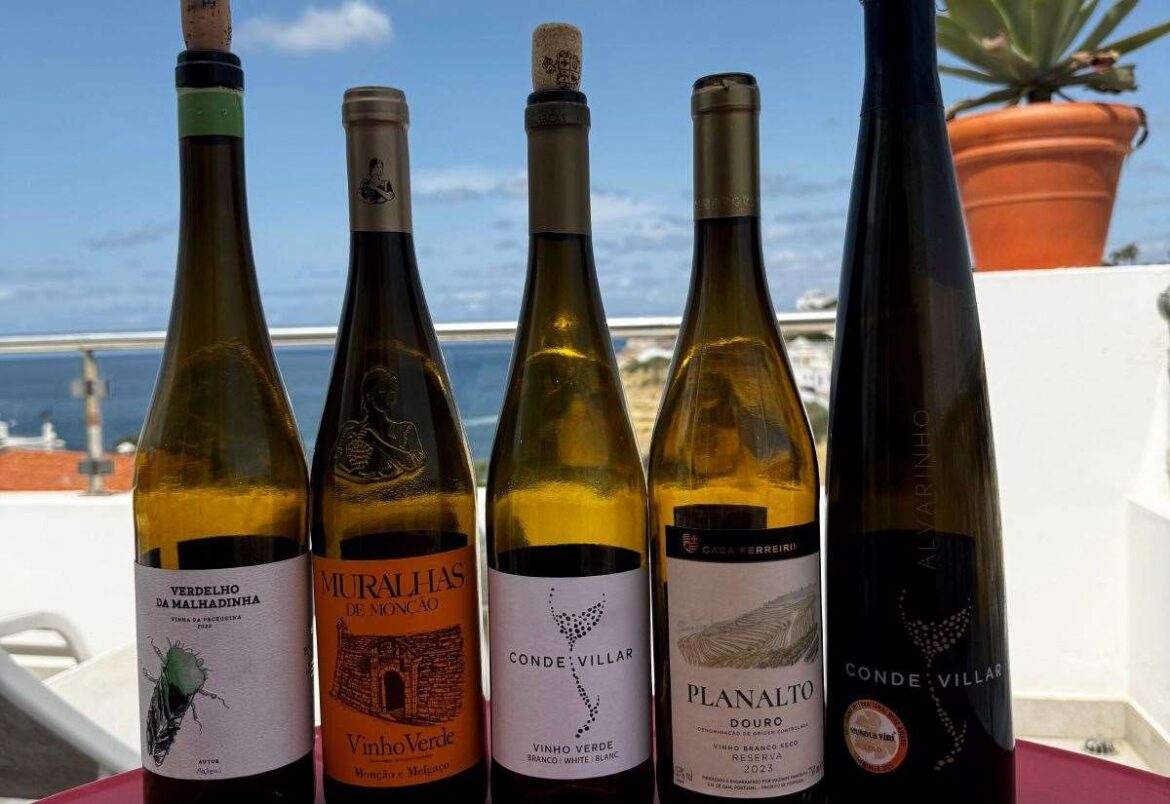This past week I have been conducting a deep dive into the wines of Vinho Verde. By which I mean I am on a family holiday in Portugal, and supply has been plentiful.
Sunshine, seafood and bottles of fresh, lightly pétillant whites have become the rhythm of our days.
This sort of informal tasting programme makes me rethink why Portuguese wines aren’t more widely embraced back home. In fact, I’ve been thinking about it for a while, which has encouraged me to dedicate a disproportionate amount of time in recent months to righting that wrong at Vino Gusto.
Almost every bottle I’ve opened here has been honest, characterful and wildly good value. In a wine world that feels increasingly expensive, Portugal remains a treasure chest of value.
 Some of the Portuguese wines Jake has been enjoying in his holiday
Some of the Portuguese wines Jake has been enjoying in his holiday
The Portuguese have been making wine since Roman times, but still appear frustratingly under the radar in the UK. Sure, there has been a movement among big red wine drinkers – who appreciate heady alcohol and face-melting tannin above all – towards the sunshine-soaked Douro. But the climatic and cultural diversity of the country allows for a myriad of styles.
Perhaps it is the indigenous grape names (Encruzado! Trincadeira!) or the unfamiliar regional labels that divert us away from experimentation. But those who do dive in will discover a culture of deeply individual wines, often from small producers, that punch far above their price.
Part of the value proposition is down to Portugal’s relative isolation during the 20th century.
While neighbours like Spain and Italy were internationalising, Portuguese winemaking remained more inward-looking. It is only in the past few decades that its full spectrum of talent and terroir has come into international view. The result is a wine scene that feels refreshingly unformulaic. Instead of international styles, you find wines that feel and taste of where they come from.
Nobody has better helped me understand the excitement of Portugal’s vinous gems than our import partner, Ricardo Rodrigues of Portuguese Story Wines.
Through a number of focused tastings, I have learned that indigenous grape varieties are likely one key. There are at least 250 native varieties, most of which have never been subject to the pricing premiums of their better-known European cousins for their ability to be planted internationally.
Ricardo is a specialist importer, working with small-scale, family producers where winemaking is modest and hands-on. His producers work their land and don’t chase global wine scores. And the diversity among his agencies is staggering. From bright and refreshing coastal whites to structured and age-worthy mountainous reds, volcanic island wines, elegant fortifieds and experimental Pét-Nats, it’s hard to get bored.
 Wine corks
Wine corks
Of course, much of the diversity is dictated by Portugal’s geography. Let’s take a whistle-stop tour:
Vinho Verde in the cool, rainy northwest, between the Douro River and the Spanish border, is probably the most familiar name. It’s certainly familiar to customers of Vino Gusto and visitors of Portugal who will find wines of this region as the house pour in most bars and restaurants across the country. But it’s far more than the fizzy, feather-light bottles of the past. Look for single-varietal Alvarinho or Loureiro for a more serious, citrus-edged take. Perfect with grilled sardines, salty cheeses and long evenings on the terrace.
Next, the Douro Valley, stretching from the city of Porto to the Spanish border. It’s a dramatic landscape of steep, terraced vineyards carved into schistous hillsides, making it arguably the most beautiful wine region in Europe. The hot, dry climate and varied elevations produce powerful, structured reds and complex, mineral whites, as well as the region’s iconic fortified Port wines.
To the south, the Dão is a quieter region but is arguably my favourite. The granite soils and mountainous altitude produce refined, elegant reds, especially from Touriga Nacional, and precise, almost Burgundian whites from Encruzado. One of the best discoveries from Ricado’s portfolio of wines is a co-operative from the region – Adega de Penalva – a trio (white, red and rosé) of wines that perfectly capture the spirit of the place. All mineral, refined and complex. All sub-£12.
Bairrada, hugging the Atlantic coast, is home to the famously tannic Baga grape. Once rustic, these wines are becoming increasingly elegant, thanks to the pioneering spirit of producers like Dirk Niepoort whose Bairrada Baga is as ethereal as top red Burgundy.
Then comes Alentejo, big and bold. The wines here are generous and juicy, thanks to hot sun and ripe fruit. But producers like Herdade do Rocim and Quinta do Mouro are leading the charge with balanced fresh wines, thanks to investment in high-altitude vineyards.
Even the Algarve, from where I write this now, is starting to show glimpses of vinous ambition. Vineyards here are small and scattered, but the potential is real. I am largely basing my understanding of the region on some cracking recommendations in the local bars and restaurants. It seems to me there is a natural lean here to produce aromatic whites and delicate, fruity rosés. All perfect aperitif type wines to satisfy the ambition of long, lazy afternoons.
I suspect we’ll see more exciting styles emerging from every corner of the country making their way to the UK in the next few years. So do take this opportunity to start exploring the wines as they remain well priced.
There is no need to decode every regional nuance. Simply start by asking your local independent wine merchant for something new from Portugal.
Jake Bennett-Day is co-owner and director of Vino Gusto wine shop, 27 Hatter Street, Bury St Edmunds, IP33 1NE
Call 01284 771831
Visit vinogusto.co.uk

